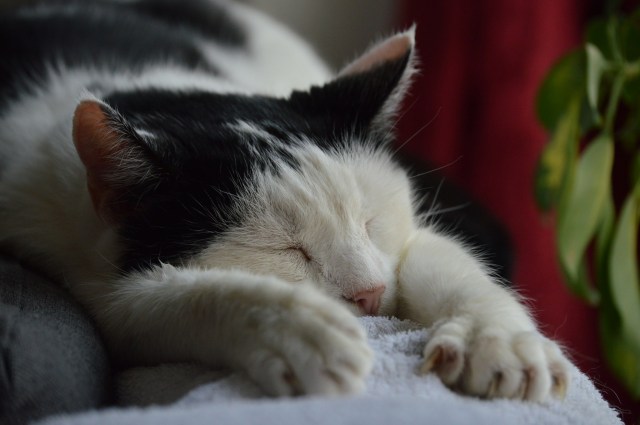
Around one in twenty of us will receive a diagnosis of post-traumatic stress disorder (PTSD) over the course of our lives (Chapter 4). It involves nightmares, flashbacks, memory difficulties, avoidance and hypervigilance, and although not the only cause, sleep has been identified as a contributing factor in the development of these symptoms. This is where Itamar Lerner and colleagues at Rutgers University come in. In a series of studies, they have recently shed light on how REM sleep might play a protective role against PTSD.
REM, or rapid eye movement, is the final stage of our nightly sleep cycles and is associated with brain activity which resembles wakefulness. It has been associated with a range of important functions, including dreaming, but the one which is relevant here is its role in emotional memories. It has been shown that REM sleep is associated with reducing our brain’s response to emotional experiences in an adaptive way. The team at Rutgers University were particularly interested in examining how habitual levels of REM were associated with responses to fear-inducing situations.
To investigate this, they firstly asked participants to record their sleep at home for a week to assess their typical sleep patterns – particularly the amount of REM. The participants then had brain scans using functional magnetic resonance imaging to understand the brain’s response to a fearful situation. This ‘fearful situation’ was created by presenting participants with office scenes with a lamp in the centre – terrifying, I know. Importantly, the colour of the lamp signified whether the participants would receive a mild electric shock or not. Over many trials, the participants learned to associate certain lamp colours with a shock in what is known as a fear conditioning paradigm. This approach is useful for learning how fearful memories are learned, and unlearned, and has implications for anxiety and PTSD.
The team at Rutgers University were interested in whether the brain’s fear network (comprised of the amygdala, hippocampus and ventro-medial prefrontal cortex) was associated with the amount of REM sleep a participant had. They wanted to investigate whether the amount of REM sleep acted as a resilience factor against the fearful situations. Their hypothesis was that REM might be protective against brain activity associated with fearful situations (e.g. receiving a mild electric shock).
In the first study, they found that the average time spent in REM each night (or percentage of time in REM sleep) was correlated with brain activity in the regions associated with fear processing. More specifically, the less REM participants had the stronger this neural network responded to a fearful situation. This, the authors claim, has a clear link to development of PTSD where there is an enhanced and persistent brain response to a traumatic, fearful, situation.
Lerner replicated this finding in a second study which also found that reduced REM sleep was associated with increased amygdala activity and reduced hippocampus and ventro-medial prefrontal cortex activation. Cumulatively, this suggested that REM was associated with how reactive this brain network, linked to fear, was when presented with a fear-inducing situation. Interestingly, these findings were not found when REM data was recorded from only a single night. This suggests that the amount of REM an individual typically gets is more informative for this relationship and it also hints at a potential risk factor for processing memories in a traumatic way.
Together these studies have some interesting implications. If it is possible to identify those who are more likely to show increased fear-network activation following a trauma then might this identify these as candidates for exemption from certain jobs?
This is exactly what Itamer Lerner suggests might be the implication of such research, “For example, when screening individuals enlisting to the army, recruiting to combat units only those with naturally high REM sleep”. Of course, further research is needed before we can be sure that REM is protective against the development of PTSD. This research is somewhat artificial currently. Lerner suggests that “one natural next step would be a longitudinal large study to try and establish a direct link between baseline REM sleep and PTSD.” He goes on to say that “measuring sleep in at-risk populations and then monitoring their anxiety levels, any traumatic events they may have experienced and whether they receive a PTSD diagnosis, for 2-3 years” would be a useful next step. This would allow us to say, with more confidence, that the amount of REM can differentiate between those with or without a diagnosis of PTSD.
Nonetheless, this collection of studies is a great first step towards understanding how REM sleep might be linked to how we process traumatic episodes. Although we are still far off implementing this in areas where traumatic experiences are commonplace, it does lend support to the role of REM in PTSD. For now, it’s worth remembering that quality sleep is beneficial for a number of psychiatric illnesses beyond PTSD and REM sleep will likely be involved in a wide range of disorders where mood is affected. As should be fairly apparent at this point, sleep is something none of us can skimp on.
Inquisitive Tortoise
Image Credits
Reference
Lerner, I., Lupkin, S. M., Sinha, N., Tsai, A., & Gluck, M. A. (2017). Baseline Levels of Rapid Eye Movement Sleep May Protect Against Excessive Activity in Fear-Related Neural Circuitry. Journal of Neuroscience, 37(46), 11233-11244.






